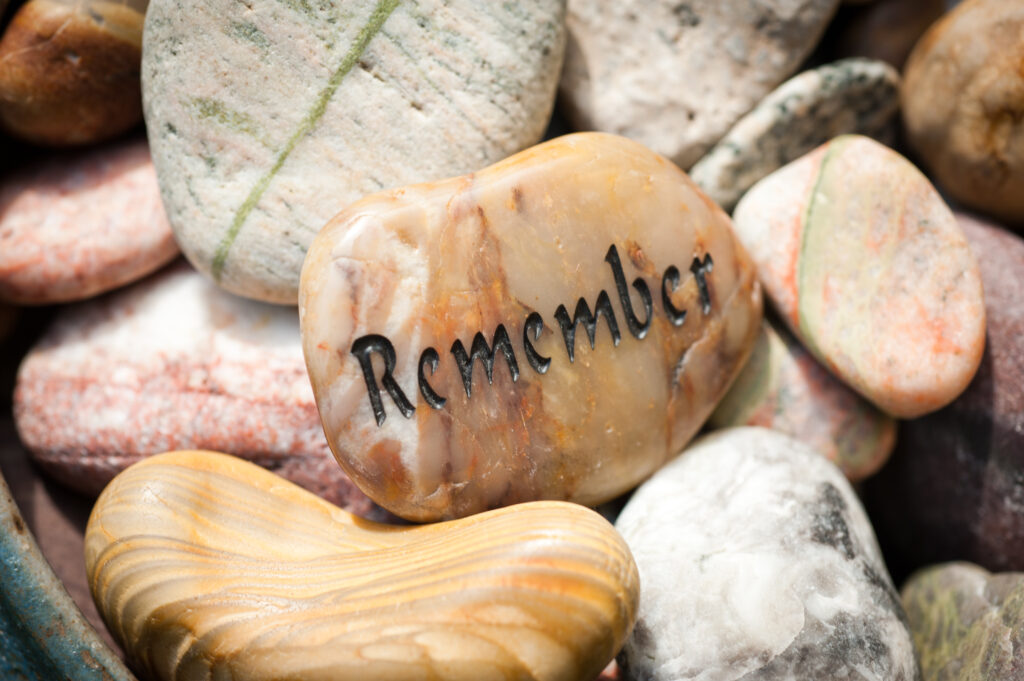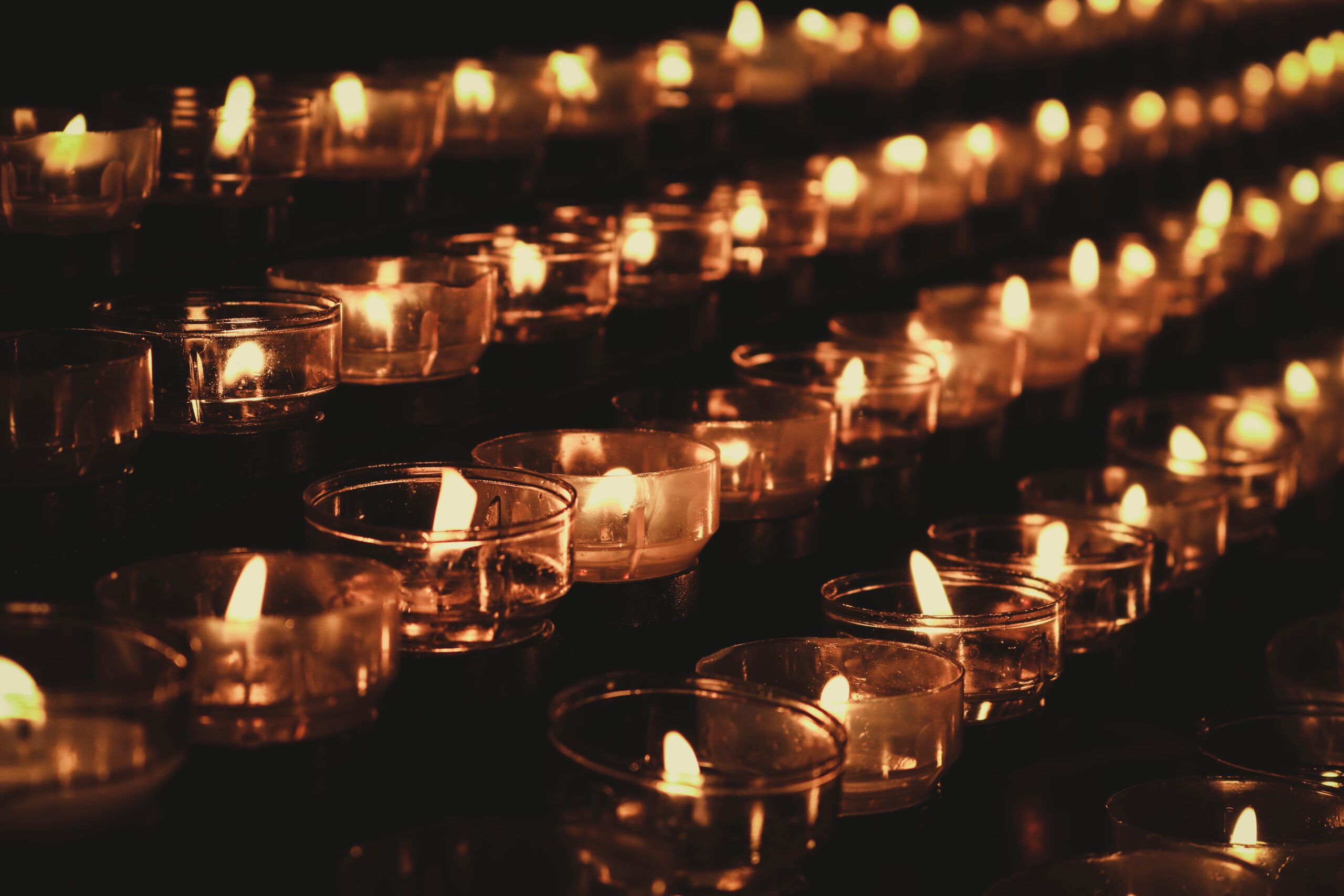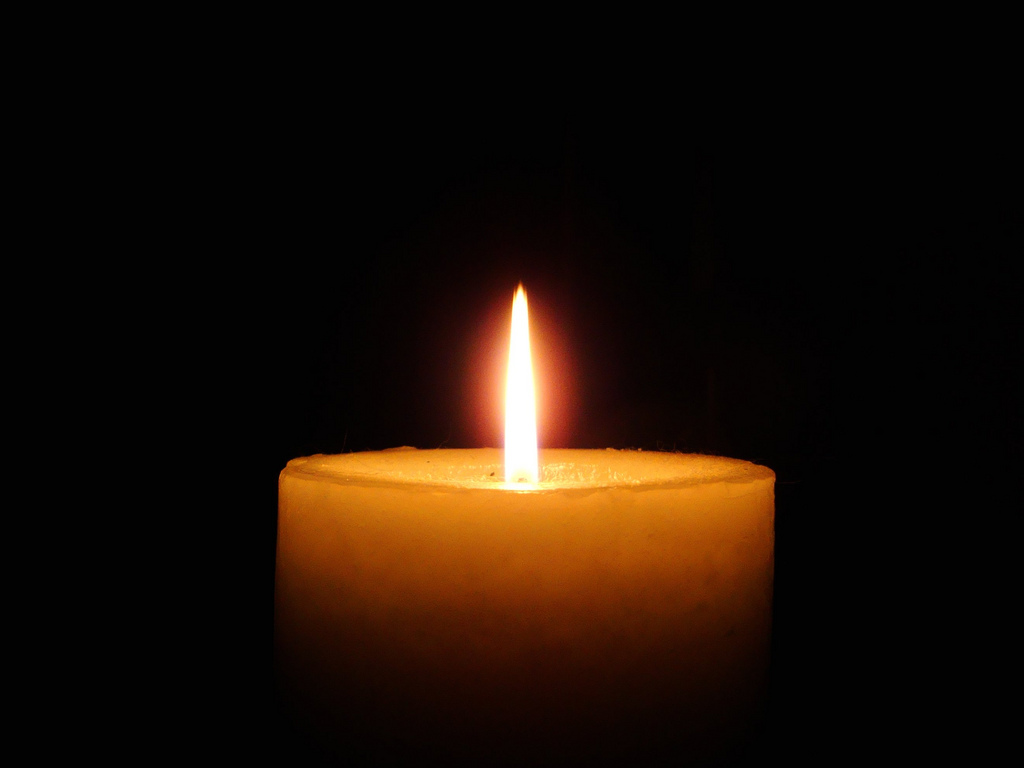The following is a ritual to mark the occasion of the first yahrzeit—anniversary of the death—of a loved one in one’s home, after sundown on the night of the yahrzeit.
When someone close to us dies, the experience of grief over their death never ends; we simply learn over time to live with the pain of their loss. Even in their absence, relationships with loved ones continue to be significant in our lives. The first yahrzeit for a loved one does not mark the end of grief, but it does mark a transition in the mourning process. We have moved through the cycle of a year feeling the absence of our loved one at each holiday, each birthday and anniversary, in ordinary moments and at major milestones. We have concluded the period of saying kaddish, after thirty days or eleven months. Having encountered death, we are different. The actions we have taken to mourn our loss and the grief we have felt inside us have changed our soul.
The practice of designating the yahrzeit as a memorial day dates back to ancient times. The annual day of remembrance is an opportunity both to celebrate our loved one’s life and legacy and to revisit the rupture in our life caused by their loss. It is a time to notice how their qualities live on in us and in the world around us and to reflect on how we have been changed by our grief. At the time of our loss we leaned on community to support us in facing the death of our loved one. We call on them now to witness and hold us in this moment of transition in our process of mourning.
Supplies
-
A 24-hour yahrzeit candle or any candle that will last for a full day. (Yahrzeit candles can be purchased at Jewish bookstores, at many synagogues, and, often, in grocery stores with a kosher food section.)
-
A cup or pitcher of water, a basin, and a hand towel.
-
Food or drink to serve after the ritual. This can be a simple snack or a full meal. (You might choose foods that were particular favorites of the person you are remembering.)
Preparation
-
In the weeks approaching the yahrzeit: Choose a cause or organization that was meaningful to your loved one to which you will make a donation on their yahrzeit in their memory; invite close friends to join you in the yahrzeit ritual.
-
A couple of weeks before the yahrzeit: Send emails to friends and relatives of your deceased loved one asking them to share memories of your loved one in writing.
-
Within the week of the yahrzeit: Dedicate some time to reflect in writing on your loved one and on the experience of the past year of mourning. Consider using the following writing prompts:
-
Bring to mind a day or a moment that you shared with the deceased that you want to remember. It can be in the recent or distant past; a remarkable experience or an ordinary one. Tell the story of that day or moment. What qualities of your loved stand out as you remember that time together?
-
How has the year of mourning changed you? What have you learned about yourself as you’ve grieved your loss?
-
-
Ask one of the people who will be attending your ritual to assist with the ritual handwashing.
On the night of the yahrzeit
1. Opening Song
Open the ritual space with a niggun—a wordless melody—or a song, such as “For With You is the Source of Life,” by David Zeller:
The lyrics, from Psalm 36:10, are:
Ki imcha mekor chayim, b’orcha nireh or
כִּי עִמְּךָ מְקוֹר חַיִּים, בְּאוֹרְךָ נִרְאֶה אוֹר
For with You is the source of life, in Your light we see light
The simple melody for the song is the same for the Hebrew and English lyrics.
You can listen to a sample of the song here: http://www.davidzeller.org/aliveness/
2. Poem
After the song recite a poem such as the one below, or one that is particularly meaningful to you or your loved one.
The Thing Is
by Ellen Bass
to love life, to love it even
when you have no stomach for it
and everything you’ve held dear
crumbles like burnt paper in your hands,
your throat filled with the silt of it.
When grief sits with you, its tropical heat
thickening the air, heavy as water
more fit for gills than lungs;
when grief weights you like your own flesh
only more of it, an obesity of grief,
you think, How can a body withstand this?
Then you hold life like a face
between your palms, a plain face,
no charming smile, no violet eyes,
and you say, yes, I will take you
I will love you, again.
“The Thing Is,” by Ellen Bass, from Mules of Love. © BOA Editions, Ltd., 2002.
3. Candle lighting
Light the yahrzeit candle and recite the following:
“Ner Adonai nishmat adam.”—“The human soul is the lamp of God.” (Proverbs 20:27) We light this candle in remembrance of you, __________, and we give thanks for knowing you. We light this candle and welcome your presence, on this your first yahrzeit, __________, even as we deeply feel your absence. We light this candle to honor your memory. May your memory be a source of comfort, blessing, and light.
4. Sharing memories and reflections
Take time now to share memories of your loved one and reflections on his or her life, as well as on the process of grief and mourning during the past year. You can begin by sharing selections from your own written reflections, followed by selections from any emails you may have received. You may then open up the space to those present to share memories of your loved one, if they knew him or her.
5. Tzedakah (Righteous Giving)
At this point, recite the following:
“We are thankful for the gift of your life, _______, for all that we have learned from you, in life and in death, and for all that we will continue to learn. We donate tzedakah to ________ in your memory. Through this act of righteous giving we carry on your name in this world.
You can say a few words about the cause or organization which you have chosen to support.
Conclude this section with the song that opened the ritual.
6. Mourner’s Kaddish
If there are ten Jewish adults present, you may recite the Mourners’ Kaddish now.
7. Hand Washing
The Torah describes the spiritual effects of encounter with death and prescribes purification rituals to help individuals reconnect to life in the aftermath. These rituals usually involve water. One such ritual practiced today is for mourners to wash their hands after burying their relative, before entering the shiva home, marking a transition from proximity with death back into the realm of the living. The first yahrzeit, too, marks a further transition away from proximity with death.
Using the cup and basin, at this point in our ritual, one of those present can pour water over the your hands, a gesture of lovingkindness and support at this moment of reconnecting to life as you transition out of the first year of mourning.
8. Eating/Drinking
Conclude the ritual by sharing some food and/or drink together and saying, “l’chaim, to life!” Sharing food with dear ones is life-affirming; reciting traditional blessings before eating is a way to acknowledge the Source of Life.














6 Responses
Reading this has been very helpful. Thank you.
Thank you for this. I was unfamiliar with this ritual and am grateful to have an understanding of it.
Blessings,
Victoria
I am looking for a spiritual unveiling for my husband, who was cremated , to commemorate his 1st year yarzheit. This has a nice flow. And is simple.
Thank you
I like your writings. I am 72 and lost my 41 year old son Michael
last March 26. I will have his unveiling in the spring. I’m
Not religious but would love to
Have something lovely to say at his monument every year to commemorate and honour my
Lovely educated son.
Thank you for this information. I was unaware of everything involved with Yartzeit.
I don’t have the needed information about exact dates and times of death of my husband or parents is it ok to do the yartseit on their birthdays?
Also I don’t belong to a synagogue/temple.
Hi Donna,
We’ll be in touch with some info!